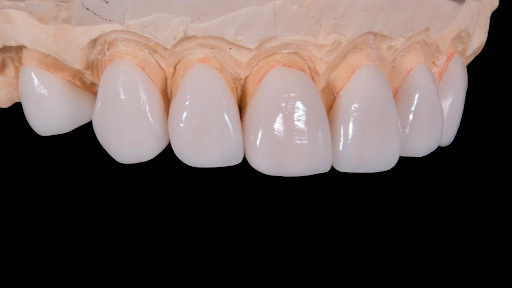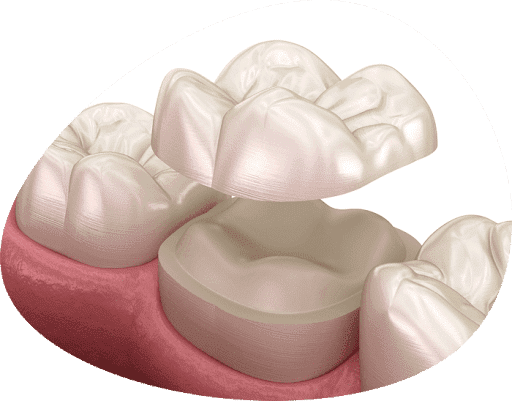Ever wondered what a dental crown is and whether you need one? Dental crowns are among the most common and effective ways to restore broken or decayed teeth. Yet most people only learn about them when their dentist brings them up during a visit.
At Alpha Dental and Implant Centre, we believe that informed decisions start with clear, friendly, and expert guidance. So let’s break down what a crown is in dental work, why you might need one, and what the entire crown procedure looks like.
What is a Dental Crown?
A dental crown (also known as a dental cap) is a custom-made covering that fits over the entire tooth. It restores the tooth’s shape, size, strength, and appearance. When you have a cracked tooth, broken tooth, or a decayed tooth, a crown acts as a protective shell, preventing further damage and restoring function.
Dental crowns are typically recommended when:
- A tooth is too damaged or decayed for a simple filling
- You’ve had a root canal treatment
- You’re getting a dental implant
- A large portion of the tooth has broken off
- A weak tooth needs reinforcement
- You want to improve the look of natural teeth
A dental crown is a helmet for a weakened tooth. It absorbs the pressure of daily chewing and protects the treated tooth underneath.
Types of Dental Crowns

There are several materials used to make dental crowns, and each comes with its own benefits.
1. Porcelain Crowns
Highly aesthetic and great for front teeth, porcelain crowns are tooth-colored and blend seamlessly with your natural teeth.
2. Ceramic Crowns
These are ideal for patients with metal allergies. Ceramic crowns offer a great balance between durability and aesthetics, especially for natural teeth in visible areas.
3. Metal Crowns
Made from gold or other alloys, metal crowns are extremely durable and perfect for molars that endure a lot of chewing.
4. Porcelain Fused to Metal (PFM)
These combine the strength of metal with the appearance of porcelain. Porcelain fused to metal crowns are strong and look more like natural teeth, but they can sometimes show a dark line near the gum over time.
The Dental Crown Procedure: What to Expect
Here’s a closer look at the step-by-step dental crown procedure, which usually takes two visits.
First Visit: Exam, Prep, and Temporary Crown
- Examination and X-rays: We check the affected tooth, its roots, and the surrounding bone. If the tooth is extensively decayed or there’s a risk of infection, you may need a root canal treatment first.
- Tooth Preparation: We reshape the prepared tooth by filing it down to make room for the dental crown. For severely damaged teeth, we may first build up the tooth with filling material.
- Impression and Shade Matching: We take an impression to create a crown that fits snugly with your surrounding teeth. We also match the color to your natural teeth.
- Temporary Crown Placement: A temporary crown is placed using dental cement to protect the prepared tooth until your permanent crown is ready. Avoid sticky foods during this time.
Second Visit: Crown Placement
- Removing the Temporary Crown: We gently remove the temporary dental crown and clean the tooth.
- Fitting the Permanent Crown: We check the fit, shape, and color of the permanent crown, making any adjustments needed.
- Cementing the Crown: Once perfect, the dental crown is cemented permanently using dental cement.
The whole crown procedure is typically pain-free thanks to local anaesthetic. You might feel some pressure, but most patients describe it as comfortable.
Do Crowns Really Last?
Yes, they do. On average, dental crowns last between 10 to 15 years depending on your oral health, habits, and crown material. For instance, ceramic crowns and porcelain crowns used on front teeth tend to wear slower than metal crowns on molars.
Proper care can make a world of difference. Here’s how:
- Brush and floss daily to maintain proper oral hygiene
- Avoid grinding or clenching your teeth
- See your dentist regularly for checkups
- Stay away from very hard or sticky foods
When Do You Need a Dental Crown?
Wondering if you need a dental crown? Here are a few signs:
- Your tooth structure is weakened after a large filling
- You’ve had a root canal treated tooth
- There’s a missing tooth being replaced with a dental implant
- You’ve cracked or chipped a tooth
- You want to cover a discoloured or misshapen tooth
- You need to protect a damaged tooth that’s at risk of breaking further
In short, if your entire tooth is compromised, a crown may be the best way to save it.
Dental Crowns and Implants: A Perfect Pair
If you’re replacing a missing tooth with a dental implant, the dental crown is the visible part that sits atop the implant abutment. This combination mimics your natural teeth in function and appearance, making it a popular option for long-term restoration.
Little-Known Facts About Dental Crowns
- According to the Australian Institute of Health and Welfare, around 32% of adults aged 15 and over have tooth decay. Crowns are often used to restore these teeth.
- A temporary dental crown is crucial because it prevents sensitivity and keeps the prepared tooth from shifting
- Some newer crowns are made using CAD/CAM technology, allowing for same-day crown placement in certain clinics
- Unlike dental veneers, dental crowns cover the entire tooth, offering greater protection
- Crowns can also be used to anchor a dental bridge, helping restore multiple missing teeth
Frequently Asked Questions
Is a dental crown painful?
Not usually. Local anaesthetic is used during the crown procedure to prevent discomfort. Some people experience minor soreness afterward, but it fades quickly.
How much does a dental crown cost in Australia?
Costs vary based on material and complexity. In Australia, a dental crown typically ranges from $1,200 to $2,500. Your health fund may cover part of it. Check with your provider.
How long does a dental crown last?
With good care, permanent crowns can last 10–15 years or longer. Factors like oral health, material type, and lifestyle habits all play a role.
What is the difference between a crown and a cap on a tooth?
They’re the same thing. “Cap” is the informal term for a dental crown. Both refer to a covering placed over a damaged tooth.
Can I eat with a temporary crown?
Yes, but stick to soft foods and avoid chewing on the side with the temporary crown. Don’t eat anything too hard or sticky.
Ready to Restore Your Smile?
Now that you know what a dental crown is, you’re better equipped to take charge of your oral health. Whether you’re dealing with a broken tooth, preparing for a dental implant, or reinforcing a weakened tooth, the team at Alpha Dental and Implant Centre is here to help.
We offer custom dental crowns, including porcelain crowns, ceramic crowns, and more. Our approach is personalised, gentle, and focused on long-term results.
Book your first visit today and discover how a single dental crown can restore both function and confidence to your smile.




